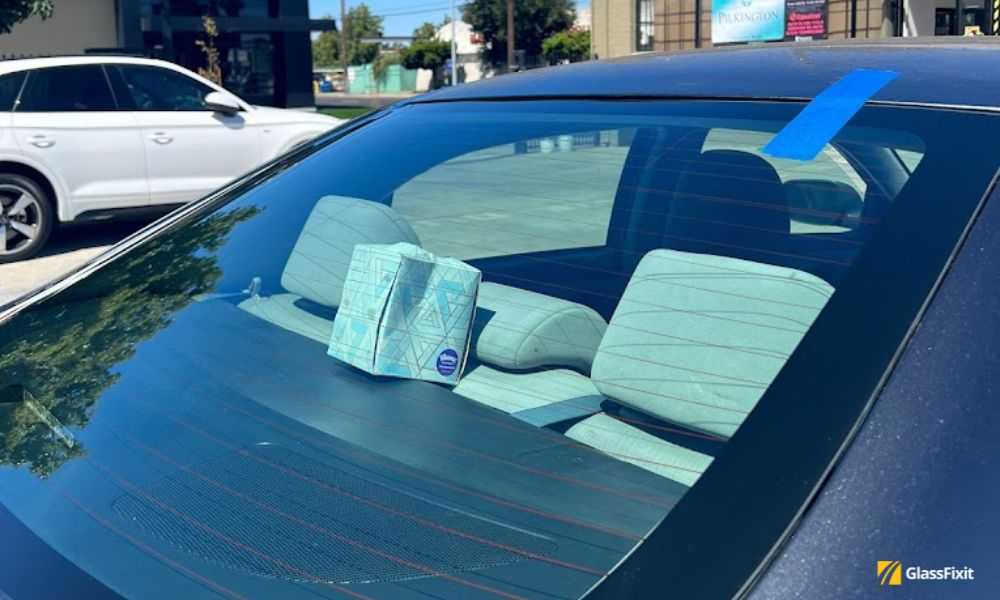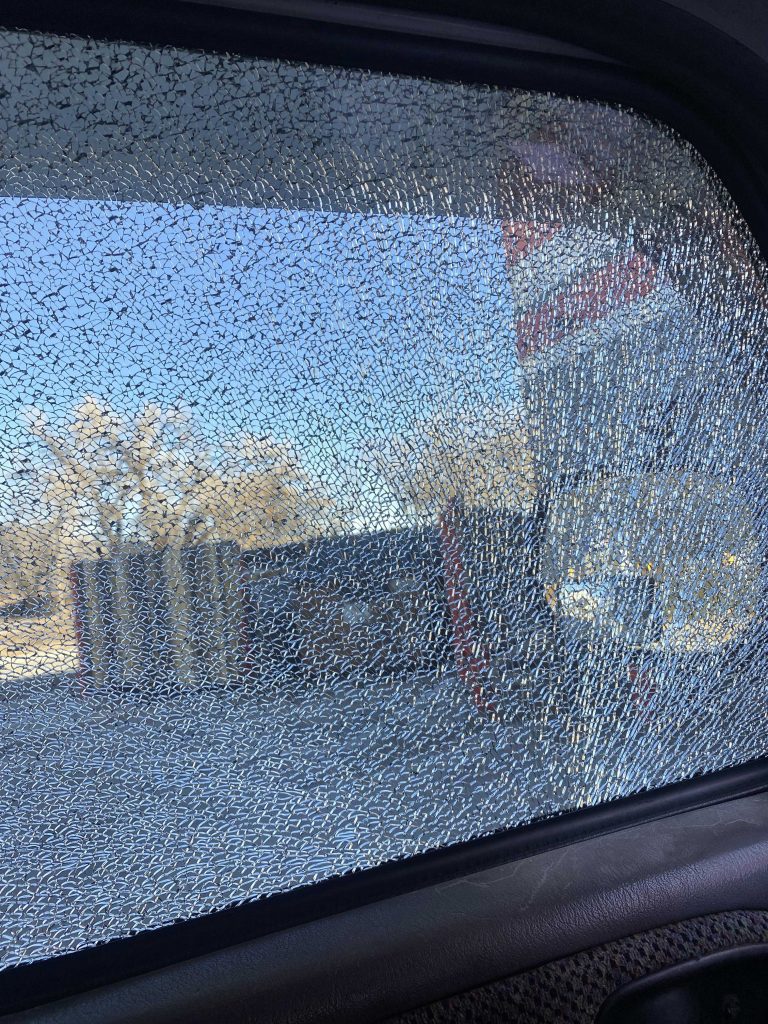To fix a cracked rear windshield quickly, the best immediate step is to apply a clear adhesive resin or use a windshield repair kit to prevent the crack from spreading further. For a more permanent fix, replacing the entire glass is often necessary, especially for large or complex cracks. Always consult a professional for safety and durability.
If your rear windshield has a crack, don’t panic. Small cracks can sometimes be temporarily stabilized with a repair kit, but for a long-term solution, replacing the glass is usually the safest option. Addressing the problem promptly can save you money and prevent the damage from worsening, which could compromise your vehicle’s safety and legality. Keep reading to learn practical steps for fixing or replacing your cracked rear windshield effectively and safely.
Cracks in the rear windshield can occur suddenly and can be quite worrying, especially when you’re unsure whether to repair or replace it. Fixing a crack quickly and properly not only restores the appearance of your vehicle but also ensures your safety on the road. Whether you’re considering a temporary DIY fix or a professional replacement, knowing your options helps you make an informed decision. In this guide, we’ll walk you through the steps to assess the damage, choose the right repair method, and understand when it’s time to seek expert help.
How to Fix a Cracked Rear Windshield
Understanding the Damage: Types of Cracks and Their Impact
To effectively repair a cracked rear windshield, you first need to understand the **different types of cracks**. The main types include stress cracks, chip cracks, and straight cracks.
Stress cracks are usually caused by temperature changes or physical stress. They often appear as small lines that spread across the glass surface.
Chip cracks are tiny shattered areas often resulting from small stones or debris hitting the glass. These can expand over time if not repaired promptly.
Straight cracks run in a single line from the point of impact, often caused by sudden pressure or force. Recognizing the crack type helps determine the best repair method.
Assessing the Severity of the Crack
Before proceeding with any repair, evaluate the **size and location of the crack**.
Cracks shorter than six inches are generally repairable. Larger cracks or those that intersect the edges might require windshield replacement.
Think about whether the crack obstructs your view or compromises the rear windshield’s structural integrity. If it affects your visibility, professional repair is often the safest choice.
Remember, the **location** of the crack matters. Cracks near the edges tend to spread faster and may weaken the glass more quickly.
Safety Precautions Before Repairing
Ensure your safety before starting any repair process.
Wear **gloves** to protect your hands from glass shards. Use **eye protection** to shield your eyes from small flying pieces.
Work in a well-ventilated area free of dust and debris. If the crack is large or extensive, it’s safer to seek professional help rather than attempting a DIY fix.
Avoid driving your vehicle if the crack is large or if you notice the windshield’s structural weakening.
Tools and Materials Needed for DIY Repair
To repair a small crack effectively, gather the following materials:
- Windshield repair kit (includes resin, applicator, curing strips)
- Pure Isopropyl alcohol or glass cleaner
- Microfiber cloths
- Utility knife or razor blade
- Painter’s tape
- UV light source or sunlight
Using a quality repair kit is essential for good results and long-lasting repairs. Choose a kit compatible with glass repair and follow the instructions carefully.
Preparing the Windshield for Repair
Start by thoroughly cleaning the cracked area with glass cleaner or isopropyl alcohol.
Use a microfiber cloth to remove dirt, dust, and grease, making the surface as clear as possible.
Dry the area completely before applying any repair materials. A clean surface ensures proper adhesion of the resin.
Use painter’s tape to mark the boundaries around the crack, preventing excess resin from spreading to unwanted areas.
Step-by-Step Guide to Fixing the Cracked Rear Windshield
Once prepared, follow these steps:
Step 1: Applying the Resin
Insert the resin syringe into the applicator provided in your repair kit.
Carefully inject the resin into the crack, making sure it fills the entire length and width.
Apply gentle pressure to push the resin deep into the crack for better bonding.
Step 2: Curing the Resin
Cover the filled crack with a curing strip, which helps evenly distribute UV light.
Expose the repaired area to sunlight or a UV light source.
Allow the resin to cure for the time specified in your repair kit instructions, usually around 15 to 30 minutes.
Step 3: Removing Excess Resin
Once cured, remove the curing strip carefully.
Use a razor blade or utility knife to gently scrape off any surplus resin that has seeped out.
Be cautious not to scratch the glass during this process.
Step 4: Final Cleaning
Clean the repaired area with a clean microfiber cloth and glass cleaner to remove any residual material.
Inspect the repair for any missed spots or air bubbles and repeat the process if necessary.
When DIY Repair Is Not Enough
While DIY kits can fix small cracks, larger or complex damage might need professional intervention.
If the crack spans more than six inches or is located near the edges, explore **professional windshield repair services**.
They use advanced tools and stronger materials for more durable repairs or replacements.
If your vehicle is under warranty or covered by insurance, check whether repairs can be fully or partially covered.
Cost Considerations for Repair and Replacement
DIY repair kits are **cost-effective**, typically ranging from $10 to $50.
Professional repairs can cost between $100 and $400 depending on the damage.
Sometimes, replacing the entire rear windshield is more economical, especially for extensive damage.
Compare the costs and benefits of DIY versus professional repair to make an informed decision.
Preventing Future Cracks and Damage
To avoid cracking the rear windshield again, take these precautions:
- Avoid parking under trees or areas prone to falling debris.
- Drive carefully over potholes or rough terrain.
- Replace windshield wipers regularly to prevent scratching the glass.
- Use sunshades or parking in shaded areas during hot weather to reduce stress on the glass.
Regularly inspect your windshield for early signs of damage, and address small cracks immediately.
Additional Repair Tips and Tricks
Here are some helpful tips to ensure a successful repair:
- Always follow the instructions provided with your repair kit for best results.
- Work when the temperature is between 60°F and 80°F for optimal curing.
- Avoid touching the resin during curing to prevent contamination.
- Repeat the process if the crack persists or if you notice air bubbles forming.
Patience and attention to detail are key when repairing a cracked rear windshield.
When to Seek Professional Help
If you’re unsure about the extent of damage or uncomfortable performing repairs yourself, consult a professional.
Professional technicians can evaluate whether a repair will hold or if a full windshield replacement is necessary.
They also ensure the structural integrity and safety of your vehicle’s glass.
Taking prompt action when cracks appear not only saves money but also maintains your vehicle’s safety. Proper repair helps prevent the crack from spreading and keeps your rear windshield in good condition for years to come.
How to PROPERLY Replace a Rear Windshield (No Special Tools DIY)
Frequently Asked Questions
Can regular windshield repair kits be used to fix a cracked rear windshield?
Regular windshield repair kits are often designed for smaller chips and cracks on front windshields. Using them on a rear windshield with significant damage may not yield effective results because rear glass is usually thicker and may have different properties. For minor surface cracks, some repair kits might help temporarily, but for larger or deeper cracks, it’s best to consult a professional who can evaluate whether a repair or replacement is necessary.
What are the signs that indicate a rear windshield needs immediate replacement rather than repair?
If the crack or chip is extensive, spreads rapidly, or covers a large area, it compromises the structural integrity of the glass. Also, when the crack reaches the edges or interferes with the driver’s view, replacing the rear windshield becomes essential. For safety reasons, if the damage interferes with the defroster lines or causes a distorted view, replacing the glass ensures safety and compliance with vehicle regulations.
Are there temporary solutions to prevent a crack from worsening before professional repair?
Yes, you can apply clear tape or a windshield repair film over the crack to prevent dirt and moisture from entering, which can worsen the damage. Avoid washing the vehicle or exposing it to extreme temperature changes as these can cause the crack to spread. While these measures can delay further damage, it’s important to schedule a professional repair or replacement as soon as possible for a permanent fix.
What factors influence the cost of fixing or replacing a cracked rear windshield?
The cost depends on the extent of the damage, the type of vehicle, and the glass manufacturer. Replacing a rear windshield typically costs more than repairing minor cracks because of the size and complexity involved. Additional expenses may include calibration of safety features, such as cameras or sensors integrated with the glass. Getting quotes from professional auto glass specialists helps determine the best option within your budget.
Final Thoughts
To fix a cracked rear windshield, gather necessary supplies like a repair kit or clear epoxy. Clean the area thoroughly to remove debris and moisture. Apply the adhesive carefully, following the manufacturer’s instructions, and allow it to cure completely. Regularly inspect the repair to ensure it remains intact and consider professional replacement if the crack worsens.
In conclusion, knowing how to fix a cracked rear windshield helps you save time and money. Proper repair prevents further damage and maintains safety. A well-executed fix can extend the life of your vehicle and ensure clear visibility.



